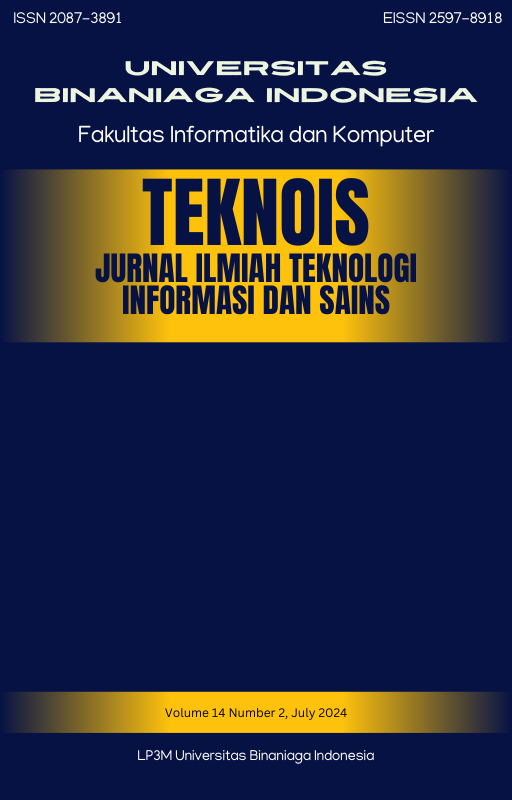Abstract
A decision support system combined with the SMARTER method can help farmers to make decisions through good planning before starting rice cultivation activities. The SMARTER method in this study is processed with rank order centroid (ROC) weighting where existing criteria have weights based on priority levels and can map rice fields into three categories, namely the S1 (Very Suitable) S2 (Moderately Suitable) S3 (Marginally Suitable) N (Not Suitable) category. Of the 30 data processed, the results showed that about 56.6% were in the S2 (moderately suitable) group, 23.3% in the S3 (marginally suitable) group and 20% in the N (not suitable) group. From the results of the tests that have been carried out, the accuracy value is 76% and the results of the user test questionnaire are 89.28% and the system expert test is 100%. Seeing these percentages, the rice plant agricultural land mapping system with the SMARTER method is feasible to use as a determination of the suitability of rice plant landReferences
Arikunto. (2009). Prosedur Penelitian Suatu Pendekatan Praktik. Rineka Cipta.
Edwards, & Barron. (1994). SMARTS and SMARTER: Improved Simple Methods for Multiattribute Utility Measurement. Organizational Behavior and Human Decision Processes. OBHD, 306–325.
Fadly, Darmi, & Prabowo. (2017). Sistem Penentu Calon Penerima Beasiswa Menggunakan Metode Smarter dan Forward Chaining. Jurnal Media Infotama, 101–110.
Haris, Satria, & Ukkas. (2017). Penerapan Sistem Penunjang Keputusan Pemberian Diskon Pada Reseller Dengan Metode Simple Multi-Attribute Rating Technique Exploiting Ranks (Smarter). energy, 31–37.
Hendartie, Jayanti, & Sutejo. (2023). Pengujian aplikasi penerimaan mahasiswa baru ( pmb ) stmik palangkaraya menggunakan black box testing.
Hutahean, Nugroho, Abdullah, Kraugusteeliana, & Aini. (2023). Sistem Pendukung Keputusan. Yayasan Kita Menulis.
Isbah, & Yuni. (n.d.). Analisis peran sektor pertanian dalam perekonomian dan kesempatan kerja di provinsi riau. Riau.
Maharani, H., Abda, D., & Hastuti, D. (MIB). enerapan Metode SMARTER pada Sistem Pendukung Keputusan Pemilihan Lahan Kayu Putih. 2023, 178–188.
Monalisa, & Wahid. (2021). Implementasi metode smarter untuk sistem pendukung keputusan pemilihan lahan kelapa sawit pada PT Eka Dura Indonesia. Jurnal Ilmiah Rekayasa Dan Manajemen Sistem Informasi, 133–138.
Nurdin, Fahrozi, Ula, & Muthmainah. (2020). Decision Support System for Appropriate Soil Type for Food Plant using SMARTER and SAW Method. Informatika Pertanian, 83–88.
Pratama, & Sediyono. (2017). Analisis Peranan User Pada Proses SDLC Terhadap Pengembangan Sistem Informasi Perjalanan Dinas. Jurnal Buana Informatika, 11–18.
Rahmad, Sihombing, & Masrizal. (2021). Implementasi Metode SMARTER Untuk Rekomendasi Penerima Bantuan Raskin Masa Covid 19. Jurnal Media Informatika Budidarma.
Ramadhan, Bella, Mustakim, Hadinata, & Niam. (2018). Implementasi Metode SMARTER Untuk Rekomendasi Pemilihan Lokasi Pembangunan Perumahan Di Pekanbaru. Jurnal Ilmiah Rekayasa Dan Manajemen Sistem Informasi, 42–47.
Sianturi. (n.d.). Analisis Metode Simple Multi Attribute Rating Technique Exploiting Rank (smarter) pada sistem pendukung keputusan pemilihan smartphone android di toko shine cellular mega bekasi hyper.
Sugiyono. (2019). etode Penelitian Pendidikan (Kuantitatif ,Kualitatif, Kombinasi, R&D dan Penelitian Pendidikan) (Ke-3). ALFABETA.
Susanto, & Dara, A. (2016). Perbandingan model waterfall dan prototyping untuk pengembangan sistem informasI. Maj. Ilm. UNIKOM.
Wahyuni, & Hamzah. (2024). Analisa Tingkat usability website menggunakan metode system usability scale.
